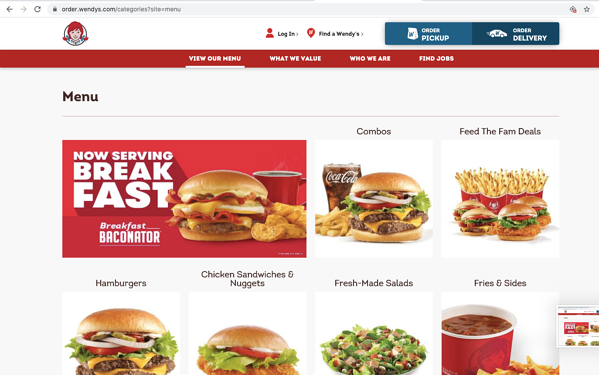Subdomains and subfolders each offer different features and SEO benefits for your website. But, the age old question between search engine optimizers is which one is better for SEO rankings? Subdomains or subfolders?
The answer often depends on the needs of your site, but it is also helpful to have a thorough understanding of each. Let’s break down the definitions of subdomains and subfolders for you and identify the advantages and disadvantages of each distinction.
What Is a Subdomain?
A subdomain is the section of a domain that is listed before the main domain name and the extension. For example, in the URL blog.bluleadz.com, blog is the subdomain.
To begin understanding subdomains, you must understand the structure of a URL. For example, this URL, https://www.bluleadz.com/ includes two parts:
- A protocol, such as “https:” is a set of rules that allows data to be sent as requests to the web server.
- The domain, “bluleadz.com,” is the URL to the website’s main page. Domains also have two parts, the top level domain (.com, .gov, .net, etc.) and the second level domain (bluleadz).
Basically, the subdomain is a second name before the second level domain (SLD). For instance, if the Bluleadz careers page was hosted on https://careers.bluleadz.com, the subdomain would be careers.
A subdomain for a website is comparable to apartment communities adding apartment numbers and building numbers to help their guests find their specific home. It helps provide a sense of organization and structure to your site.
What Is a Subdomain Used For?
Subdomains are most often used to separate websites into different sections. They make it easy to organize your website and provide your users with a simple way to find what they are looking for.
You can use a subdomain for your site for customer support, blogs, store locations, events, or anything else you’d like to separate from your main content page.
For instance, if you run a restaurant that has various locations, customers can view a main page with basic content about your restaurant. If a customer is looking for a menu at one of your other locations, they can get the information from your subdomain, newlocation.restaurant.com.
For example, Wendy’s uses the subdomain order to allow customers to view the menu and submit orders for pickup or delivery.

What Is a Subfolder?
A subfolder, also known as a subdirectory, is a folder that lives within another folder under a home directory. For example, if your website was a filing cabinet, then the folders in the cabinet are your website’s subdirectories.
Single directories are located to the right of your domain like this URL: www.sampleurl.com/products.
What Is a Subfolder Used For?
A subfolder is used for creating content categories on your website. It’s located on the same server, and it links back to the domain.
Subfolders make it easy to organize sections of related content on your website. Web assets such as downloads or images would also exist in separate subfolders. If your site has an About Us page, then there would be a folder for About Us, and the pages for each of your team members would be a subfolder of the About Us folder.
For example, the URL might resemble this one: www.sampleurl.com/about/jane.html
Subdomain vs. Subfolder
Both subdomains and subfolders are content repositories, but they have small differences that affect your website’s SEO by changing the way the website ranks and gathers keywords.
Here are some of the benefits and disadvantages of subdomains and subfolders that may help you decide which one to use for your site.
Benefits of Subdomains
- Each subdomain is recognized as a distinct website that is unrelated to the main domain by search engines. Search engine results pages (SERPs) may display your parent domain and your subdomain, which potentially pushes your competitors further down in the SERP.
- You can use subdomains to target a country, market segment, or reading group.
- If you use subdomains correctly for a website that ranks well and is already created, your subdomain may quickly benefit from your parent domain’s good rankings.
- Subdomains are clear and to the point, which helps a user understand what to expect when they click on a link. This is often very useful to visitors so they know the content they are viewing is relevant to them.
Disadvantages of Subdomains
- Added hosting fees. Subdomains are hosted on separate hosting accounts, which can cause your domain host to charge hosting fees for each subdomain site.
- Backlinks. Your subdomains don’t share the authority received from backlinks like the parent domain does. This means your subdomain may not benefit from the link authority you have built into your main site content.
Benefits of Subfolders
- Subfolders allow you to focus on making one website optimized instead of competing with yourself since one subdomain can provide better content than your main domain.
- Your site has the opportunity to get crawled more often because you likely add more content to each folder, which contributes to your overall website ranking.
- Users can easily navigate between your product or service page and your blog to help them make a decision.
- When you track your site’s performance in Google Analytics, your data is presented for the entire site.
Disadvantages of Subfolders
- Subfolders may have a high number of URL pages since the authority is shared with all other pages of the domain. This can cause the authority to get diluted when a subfolder isn’t as useful as your main content.
For example your URLs may end up looking like this: www.ecommercestore.com/app/stores/category/product/description/size/php+swimsuit&item.
There may also be different URLs that link to the same page or a 404 page that can negatively affect your SEO rankings.
How to Choose Between Subdomains and Subfolders
Every website is different, and most often choosing a subdomain or subfolder varies case by case.
Subdomains are often good for large companies that have a wide array of products and services that they offer to customers. The reason why subdomains are good for large companies is because they likely want to rank for different keywords according to each subdomain they have.
For example, Disney uses subdomains such as https://cars.disney.com/, https://movies.disney.com/, and https://disneyworld.disney.go.com/. This is because subdomains work well if you have content that has very different themes or offers from the rest of the content on your site.

Although subdomains provide many benefits to websites with high amounts of varying content, according to research conducted by Moz, subfolders are the best for long-term SEO rankings.
Selecting subfolders can help you to avoid confusing search engines and diluting backlink strength. Unless you have a specific reason to use subdomains, it is best to stick with subfolders.
The debate over subfolders and subdomains is often confusing, and your research may often complicate your decision. What matters is that you structure your website according to your SEO needs because search engines will continue to evolve making the subfolder/subdomain debate quiet down.
Digital & Social Articles on Business 2 Community
(53)
Report Post






